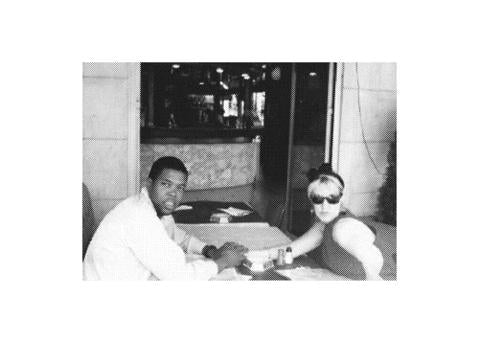
Hilton Als with the late Tina Lyons, Paris, 1985
When I was an art history major at Columbia University in the early nineteen-eighties, I studied with significant art historians, such as Kenneth E. Silver and Molly Nesbit. I was not a very good student except when it came to the things I loved, such as looking at art, reading, and hanging with my best friend, Kevin. At one point I had to take a course about connoisseurship. I lasted, maybe, two sessions before I not only left the lecture but the university – there was no way I could study taste since that entailed travel, a gathering of taste and opinion on foreign shores – in those days art history was in “Europe.”
My art history professor, Kenneth Silver, gave me five hundred dollars to buy a ticket to Paris so I could see all the work and places I had read about and observed as a student and beyond. I was just sent this photo by another professor, Molly Nesbit, who was doing her great work on Atget just then. She, in turn, received it from a man who knew the girl in the photo – Tina Lyons, who went to Barnard and who died just recently after a long struggle with brain cancer. I remember going to the movies with Tina in Paris – we were so homesick we went to see “Manhattan.” I then left Paris for England where I stayed with my friend Joseph Lennon, a dancer with the Michael Clark company. We lived in a squat in Islington. I remember crossing the grey channel.
Years passed, and I continued to look at pictures, and to read, and to make my own taste – a collection of thoughts and opinions that included much more than the hierarchy of taste I was supposed to adhere to as a student. And as I developed my own eclectic taste – a mental collection that included all sorts of visual objects including xeroxed fan zines and DIY books, a world where artists made their own galleries – I started collecting images that I was drawn to – photographs, for the most part, that were given to me by the artists themselves. The pictures I prized most were their copy prints, the throwaway pieces of paper that were transformed by the magic of photography and that had no ostensible monetary value but all the value in the world as far as I was concerned since what I love to collect most are the things that other people think ought to be forgotten.
